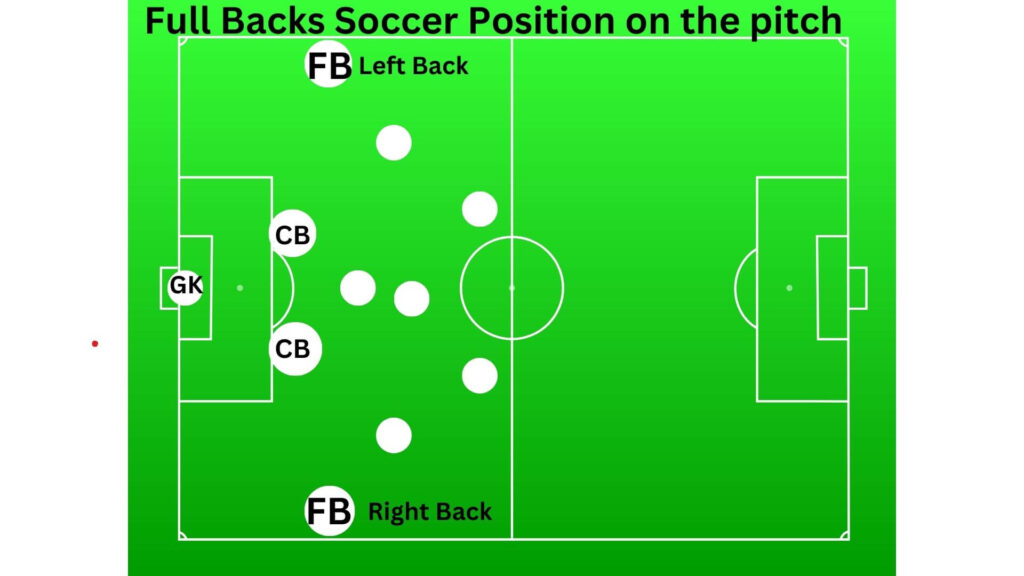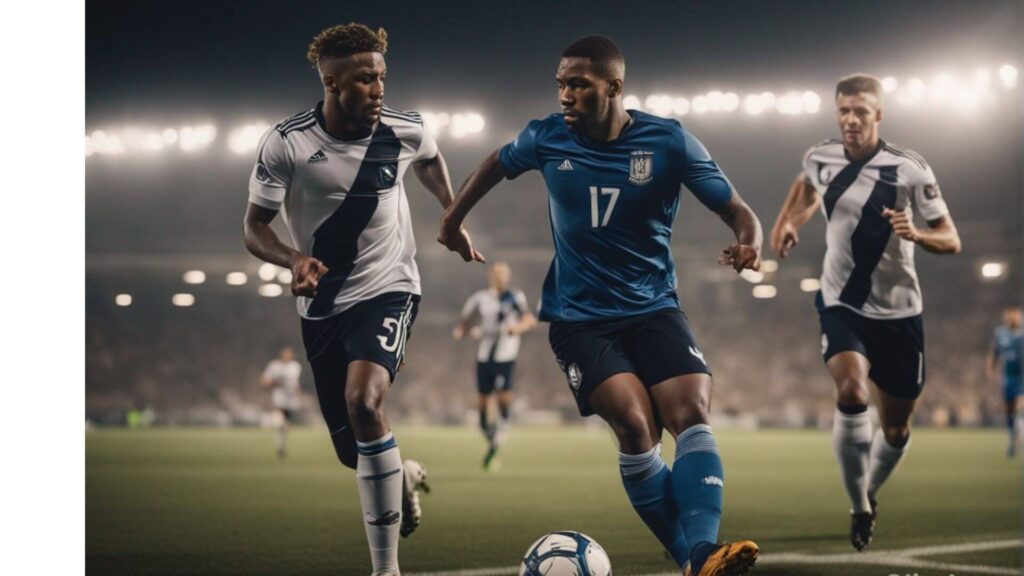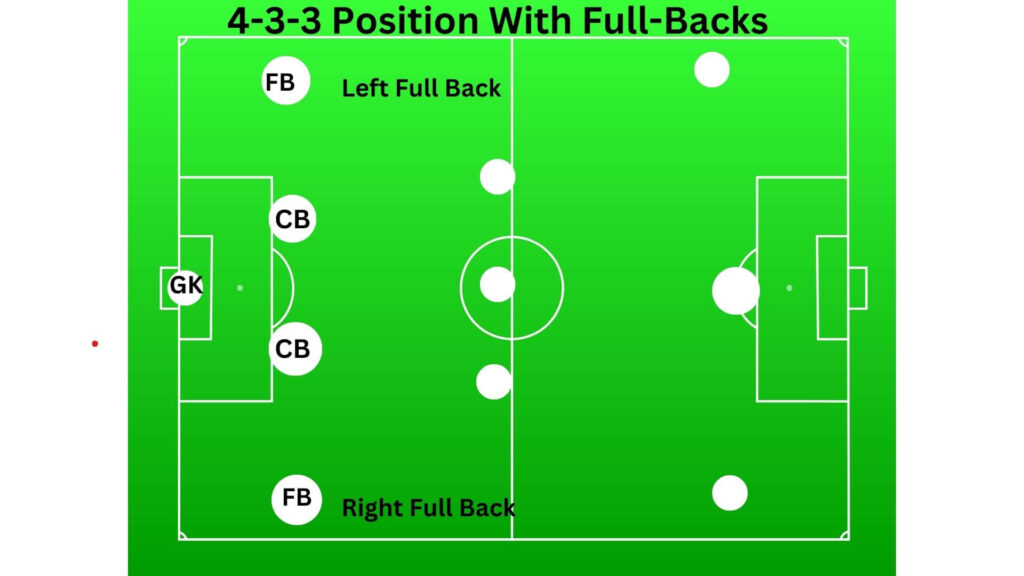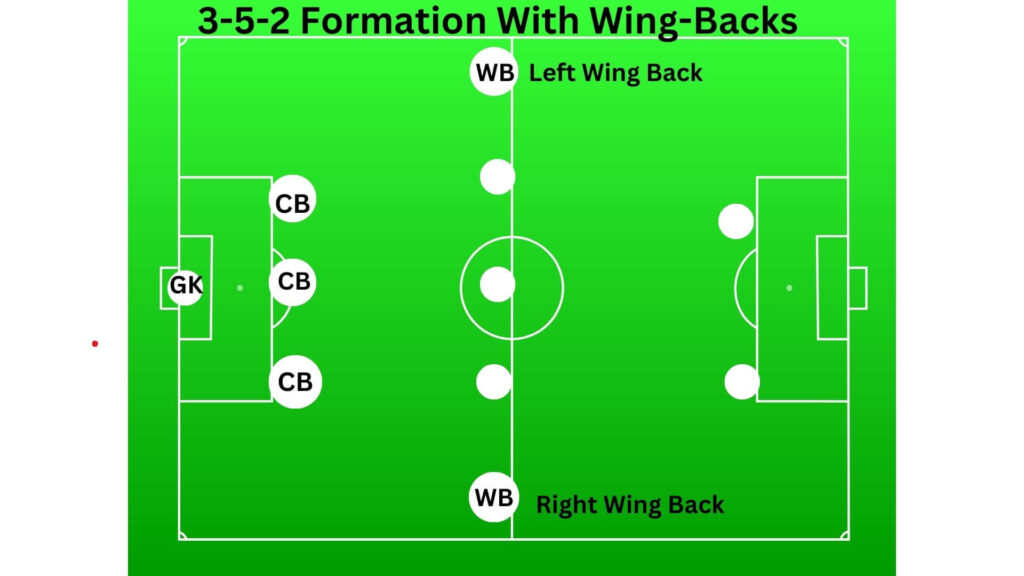In the dazzling world of soccer, it’s the star forwards and flamboyant midfielders who often hog the limelight. But hidden in the shadows are the unsung heroes of the pitch – the full backs.
Often overlooked, these versatile players are the unsung engine of any formidable soccer team.
In this article, we delve deep into the full back soccer position, shining a light on their crucial role, their responsibilities, and the skills that make them indispensable.
Let’s get started.
Table Of Contents
- What is Full Back Position in Soccer?
- How to Play Fullback in Soccer?
- The Responsibilities of a Full Back
- What Skills Do you need to be a Full-Back?
- What Makes a Good Fullback in Soccer/Football?
- Full-back vs. Wing-back: Understanding the Difference
- Famous Fullbacks in Soccer
- Full Backs: The Unsung Heroes
- Personal Anecdote
- FAQ
- Final Thoughts
What is Full Back Position in Soccer?

A full-back in soccer is a versatile player positioned on the defensive line, responsible for both defense and supporting attacking moves on the flanks.
How to Play Fullback in Soccer?
Playing as a fullback in soccer requires a blend of defensive prowess and attacking flair. Follow these steps to excel in this crucial position:
- Defensive Discipline: Focus on maintaining a solid defensive shape, track opposition wingers, and make timely tackles and interceptions.
- Positioning: Stay aware of your positioning on the pitch, avoid being caught out of position, and form a strong defensive partnership with the centre-backs.
- Overlapping Runs: Time your overlapping runs down the wings to provide width in the attack, create space, and deliver accurate crosses into the box.
- Crossing Skills: Work on your crossing ability to become a threat during attacking moves and set up goal-scoring opportunities for your teammates.
- Communication: Constantly communicate with your teammates to coordinate defensive efforts and support the midfield during transitions.
- Speed and Endurance: Develop your speed and stamina to cover the full length of the pitch and swiftly recover when your team loses possession.
- Dribbling Confidence: Hone your dribbling skills to maneuver through opponents when needed and retain possession in tight situations.
- Study the Game: Watch professional fullbacks in action, and analyze their positioning, decision-making, and defensive techniques to learn and improve.
- Stay Confident: Embrace the challenges of the position, stay confident in your abilities, and remember the vital role you play in the team’s success.
By mastering these fundamental skills and maintaining a positive mindset, you can become a reliable and influential fullback in soccer.
The Responsibilities of a Full Back

Full backs are entrusted with various critical responsibilities, making them one of the most dynamic players on the field. Some of their key tasks include:
a) Defensive Duties: Full backs must stay vigilant in tracking opposition wingers and thwarting their advances. They engage in tackles, interceptions, and clearances to protect their goal.
b) Overlapping Runs: One of the unique aspects of a full back’s role is making overlapping runs along the wings. By pushing forward and providing width in the attack, they create space and opportunities for their teammates.
c) Crossing and Assisting: When full backs advance into the attacking third, they are expected to deliver precise crosses into the box and provide goal-scoring opportunities for their teammates.
d) Quick Recovery: Due to their advanced positioning during attacks, full backs must possess the speed and stamina to quickly retreat when their team loses possession, preventing counter-attacks.
What Skills Do you need to be a Full-Back?
To excel in the full back position, players need to master a unique blend of skills. Some of the crucial attributes include:
a) Speed and Stamina: Full backs must have the pace to keep up with speedy wingers and the endurance to cover the length of the pitch throughout the game.
b) Defensive Awareness: Being tenacious defenders, they need to read the game, anticipate opponent movements, and maintain a strong defensive shape.
c) Crossing Precision: Their ability to deliver accurate crosses into the penalty area can turn a game on its head, creating scoring opportunities for their teammates.
d) Ball Control and Dribbling: Full backs often find themselves in tight situations where dribbling skills come in handy to navigate through opponents and initiate attacks.
What Makes a Good Fullback in Soccer/Football?
A good fullback in soccer/football stands out by embodying a unique set of attributes that elevate their performance on the pitch. Here are some key qualities that define a top-notch fullback:
- Defensive Tenacity: A good fullback exhibits unwavering defensive determination, reading the game, and making timely tackles and interceptions to thwart opposition attacks.
- Tactical Awareness: They possess a deep understanding of their positioning within the defensive line and the ability to maintain a cohesive defensive shape.
- Speed and Stamina: Excellent fullbacks have the pace to keep up with speedy wingers and the endurance to contribute effectively in both attack and defense throughout the match.
- Overlapping Prowess: Effective fullbacks time their overlapping runs to perfection, providing width in the attack, and delivering precise crosses into the box.
- Composure Under Pressure: In intense moments, a good fullback remains calm and composed, making smart decisions while under pressure.
- Passing Accuracy: Their ability to distribute the ball accurately is vital in starting attacking moves and building play from the back.
- Versatility: Top fullbacks adapt to different game situations, seamlessly transitioning from defense to attack as the team’s needs demand.
- Leadership and Communication: Strong fullbacks lead by example and communicate effectively with teammates, organizing the defense and offering support during attacks.
- Defensive Recovery: They possess the skill to recover quickly when the team loses possession, preventing dangerous counter-attacks.
- Continuous Improvement: Good fullbacks never stop learning and honing their skills, seeking ways to enhance their game and adapt to modern soccer trends.
In summary, a good fullback is a defensive rock, an attacking threat, and a versatile team player. They embody the spirit of a true team player and are the unsung heroes who make a significant impact on the game’s outcome.
Full-back vs. Wing-back: Understanding the Difference
In soccer, the roles of full-backs and wing-backs may seem similar, but they have distinct differences in their playing style and responsibilities.
1. Positioning

- Full-backs: Full-backs are positioned on the defensive line, flanking the center-backs, and their primary focus is on defense while providing occasional support in attack.
- Wing-backs: Wing-backs also start from a defensive position, but they have a more advanced starting point, often playing as part of the midfield. They are more actively involved in the attacking build-up.

2. Defensive vs. Attacking Emphasis:
- Full-backs: Full-backs prioritize defensive duties and focus on containing opposition wingers, making tackles, and providing cover to the defense.
- Wing-backs: Wing-backs have a stronger emphasis on attacking contributions. They frequently make overlapping runs down the wings, deliver crosses, and support the forwards in the final third.
3. Formation and System
- Full-backs: Commonly used in traditional four-man defensive formations (e.g., 4-4-2 or 4-3-3) to create a stable backline.
- Wing-backs: More prevalent in modern systems like 3-5-2 or 5-3-2, where they act as auxiliary midfielders and contribute to both defense and attack.
4. Defensive Shape:
- Full-backs: Tend to stay deeper and maintain a more compact defensive shape, especially when facing fast and skilful wingers.
- Wing-backs: Often push higher up the pitch, offering width and stretching the opposition’s defense, which can leave spaces behind them to exploit.
5. Skill Set
- Full-backs: Strong defensive skills, solid positioning, and excellent tackling abilities are essential for full-backs.
- Wing-backs: Alongside defensive attributes, wing-backs require good crossing, dribbling, and attacking instincts to be effective in their advanced role.
6. Tactical Flexibility
- Full-backs: Generally provide stability to the team’s defense and rarely venture too far forward.
- Wing-backs: Add an extra dimension to the team’s attack and offer more versatility in formations.
Famous Fullbacks in Soccer
Over the years, soccer has witnessed the brilliance of several iconic fullbacks who left an indelible mark on the sport. Here are some of the most famous fullbacks in soccer history:
Cafu: Hailing from Brazil, Cafu was an attacking fullback with lightning speed and remarkable dribbling abilities. He won multiple domestic and international titles with clubs like AS Roma and AC Milan, and he played a pivotal role in Brazil’s World Cup triumphs in 1994 and 2002.
Philipp Lahm: A versatile fullback from Germany, Lahm was known for his tactical intelligence and versatility, capable of playing on either side of the defense. He captained Germany to victory in the 2014 FIFA World Cup and had a successful career with Bayern Munich.
Roberto Carlos: Renowned for his thunderous left-footed strikes and powerful free-kicks, Roberto Carlos was a Brazilian fullback who made a significant impact at Real Madrid. His attacking flair and defensive prowess set new standards for fullbacks.
Lilian Thuram: A defensive rock from France, Thuram was celebrated for his physicality, positioning, and outstanding tackling abilities. He was a key player in France’s victorious 1998 FIFA World Cup campaign.
Dani Alves: Hailing from Brazil, Dani Alves redefined the role of a modern fullback with his relentless attacking forays, dynamic crosses, and tireless work rate. He won numerous league titles and Champions League trophies during his career with clubs like Barcelona and Paris Saint-Germain.
These famous fullbacks not only left a lasting impression on the soccer world but also inspired a new generation of players to embrace the challenges and thrills of the fullback position. Their contributions to the sport continue to be celebrated and cherished by soccer enthusiasts worldwide.
Here are the best FullBacks in World Football according to Bleacher Report.
Full Backs: The Unsung Heroes
Despite their essential contributions, full backs are often underrated and seldom receive the praise they deserve. But every soccer team understands the vital role they play in both defense and attack. It’s their adaptability, versatility, and work rate that make them the unsung heroes of the pitch.
Personal Anecdote
As an avid soccer player myself, I recall a match where our team was trailing 1-0 in the final minutes. The opposition had us pinned in our half, and it seemed like an impossible task to stage a comeback.
That’s when our full back, Costas, made an audacious overlapping run from the left flank.
He received a pinpoint pass from the midfielder, sprinted down the wing, and whipped in an exquisite cross.
Our striker connected with the ball, and we equalized in the dying moments, snatching a crucial point from the jaws of defeat.
Costas’s heroic effort that day exemplified the impact full backs can have on a game.
FAQ
#1: What does a Fullback do in soccer/football?
A fullback in soccer plays a crucial dual role on the field. Defensively, they guard the flanks, tracking opposition wingers, making tackles, and protecting their goal. Offensively, fullbacks support the attack by making overlapping runs, providing width, and delivering crosses into the box.
#2: Is a Full-back a winger?
No, a full-back and a winger are distinct positions in soccer. Full-backs are primarily defenders, stationed on the defensive line, while wingers are attacking players who play higher up the field to create goal-scoring opportunities.
#3: Can a Fullback be a playmaker?
Though playmaking is not their primary role, modern fullbacks are evolving to become playmakers. They contribute to the team’s build-up play by initiating attacks from deep, delivering accurate passes, and setting up scoring opportunities with their crosses.
#4: Is Fullback an important position?
Absolutely! Fullbacks are vital to a team’s success. They provide defensive solidity, contribute to the attack, and help maintain a balanced formation. Their versatility and ability to cover both defensive and offensive duties make them indispensable players on the pitch.
You can also read my top 3 most important soccer positions here.
#5: How many fullbacks are there in a soccer team?
In a typical soccer team, there are two fullbacks, one on each side of the defensive line. They usually play alongside two center-backs and form a formidable back-four defensive setup.
#6: Do Fullbacks need to be fast?
Yes, speed is crucial for fullbacks. Their ability to keep up with speedy wingers, recover quickly in defensive transitions, and make overlapping runs during attacks all require good pace. However, a combination of speed and tactical awareness makes an excellent fullback.
Final Thoughts
In conclusion, the full back soccer position is far more than a mere supporting role; it’s the life force of a balanced team.
Their defensive prowess, attacking flair, and tactical versatility make them indispensable assets in modern soccer.
Let’s not forget to appreciate and celebrate the unsung heroes who toil tirelessly on the wings, often without the spotlight.
So the next time you watch a match, take a moment to acknowledge the full backs’ silent contributions, the true backbone of any soccer/football team.
Remember, soccer is more than just scoring goals; it’s a symphony of teamwork, and the full backs provide the essential harmony that makes the beautiful game complete.
You can also read the complete article I wrote about the Defense Positions in Soccer here.

